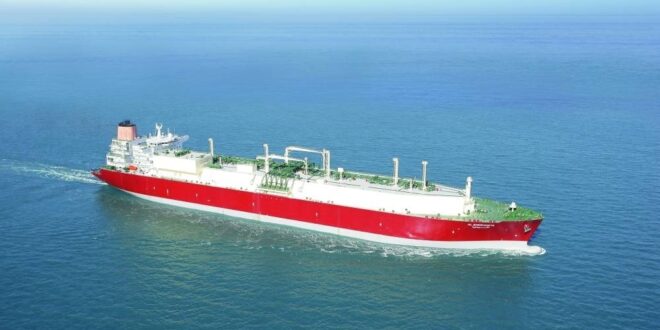Qatar is backing up its massive LNG expansion plans with new orders to charter dozens of new ships as the tiny Gulf gas producer aims to solidify its dominance in the global LNG export market.
Last year, the United States overtook Qatar as the world’s largest LNG exporter, but Qatar has a huge expansion program underway to boost its export capacity by 85% from current levels by 2030.
As the U.S. paused permit approvals for new LNG export projects earlier this year, adding uncertainty about the outlook for U.S. supply from the late 2020s onwards, Qatar is forging ahead with capacity expansion plans – and now new vessel charter deals – which could make it a number-one exporter of LNG once again later this decade.
On Sunday, QatarEnergy said it had signed long-term time charter party (TCP) agreements with four international shipowners for the operation of 19 new conventional-size LNG vessels.
Under the deals, the Qatari state firm will operate six vessels by China’s CMES LNG Carrier Investment and Shandong Marine Energy each, and three vessels by Malaysia’s MISC Berhad. All LNG carriers are being constructed at Samsung Heavy Industries in South Korea. The remaining four vessels will be operated by a joint venture of Kawasaki Kisen Kaisha Ltd (K-Line) and Hyundai Glovis Co. Ltd. and are being built at Hanwha Ocean, also in South Korea.
A week earlier, QatarEnergy had signed time-charter party agreements with Qatar Gas Transport Company Limited (Nakilat) for the operation of 25 conventional-size LNG vessels as part of its plan to expand the LNG fleet.
The latest deal brings the total number of vessels under long-term time charter party agreements to 104 ships, which Qatar will use to export its huge gas reserves.
Sunday’s deals mark the conclusion of the conventional-size vessels part of QatarEnergy’s LNG fleet expansion program, “a massive undertaking that is the largest shipbuilding and leasing program ever in the history of the industry,” QatarEnergy President and CEO Saad Sherida Al-Kaabi said.
“These ships will support our expanded LNG production capacity from the North Field in Qatar and Golden Pass in the U.S., while also meeting our long-term fleet replacement requirements,” added Al-Kaabi, who is also Qatar’s Minister of State for Energy Affairs.
QatarEnergy launched the long-term charter and operation program in 2022, which will support Qatar’s expanding LNG production capacity.
And in terms of LNG capacity expansion, Qatar is not wasting its time.
Earlier this year, Qatar said it was adding another major LNG expansion project to its two ongoing projects, aiming to raise its total LNG export capacity by 85% from current levels by 2030. QatarEnergy is now proceeding with the North Field West project, after drilling appraisal wells at the world’s largest natural gas field, the North Field it shares with Iran, and finding “huge additional gas quantities” in the field.
The North Field West project adds to the ongoing North Field East (NFE) and North Field South (NFS) expansion projects, with the three field developments expected to boost Qatar’s LNG production capacity to 142 million tons per annum (MTPA) before the end of this decade, up by nearly 85% from current production levels of 77 MTPA.
Last year, QatarEnergy’s Al-Kaabi said that “40% of all the new LNG that will come to the market by 2029, when all our projects are up and running, is going to be from QatarEnergy.”
Back then, the North Field West project wasn’t even announced.
With the higher volumes and low-cost supply from Qatar, the Gulf producer could eke out market share from the other two major LNG exporters, the United States and Australia, analysts say.
Last year, the US became the world’s largest LNG exporter, overtaking Qatar and Australia, according to Wood Mackenzie’s estimates.
However, a long-term pause on all new US LNG projects could affect how buyers perceive U.S. LNG supply, WoodMac said after the Biden Administration announced a pause in approvals of new LNG export projects.
“While we expect existing LNG buyers to wait in the short term, these and other potential new buyers could start to look at competing projects outside of the US, such as those in Canada, Australia and particularly Qatar, as alternative supply sources,” said Giles Farrer, head of gas and LNG asset research at Wood Mackenzie.

 Iran Energy News Oil, Gas, Petrochemical and Energy Field Specialized Channel
Iran Energy News Oil, Gas, Petrochemical and Energy Field Specialized Channel



